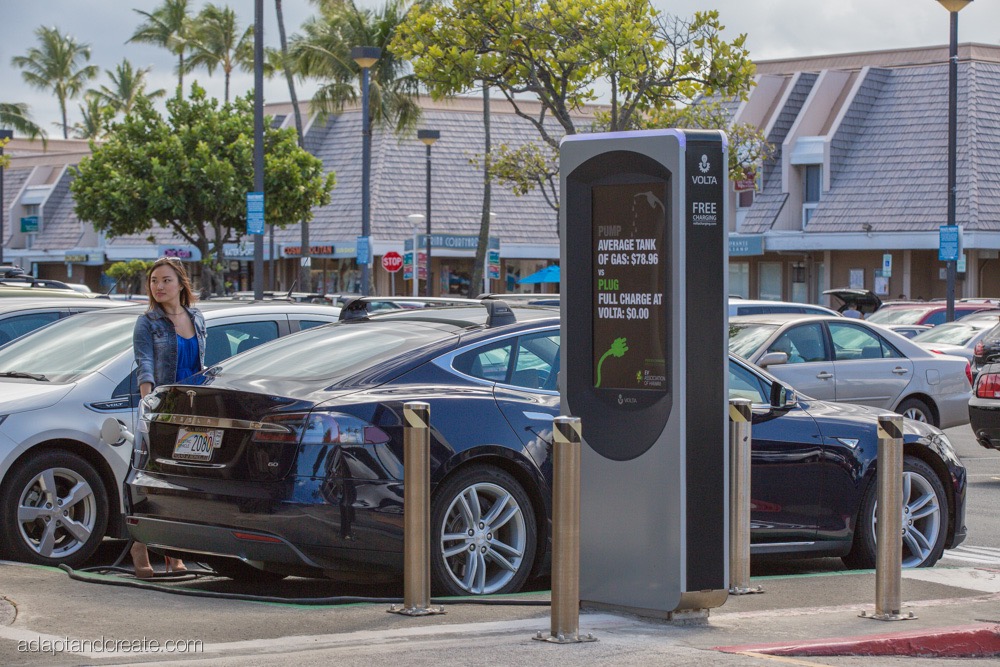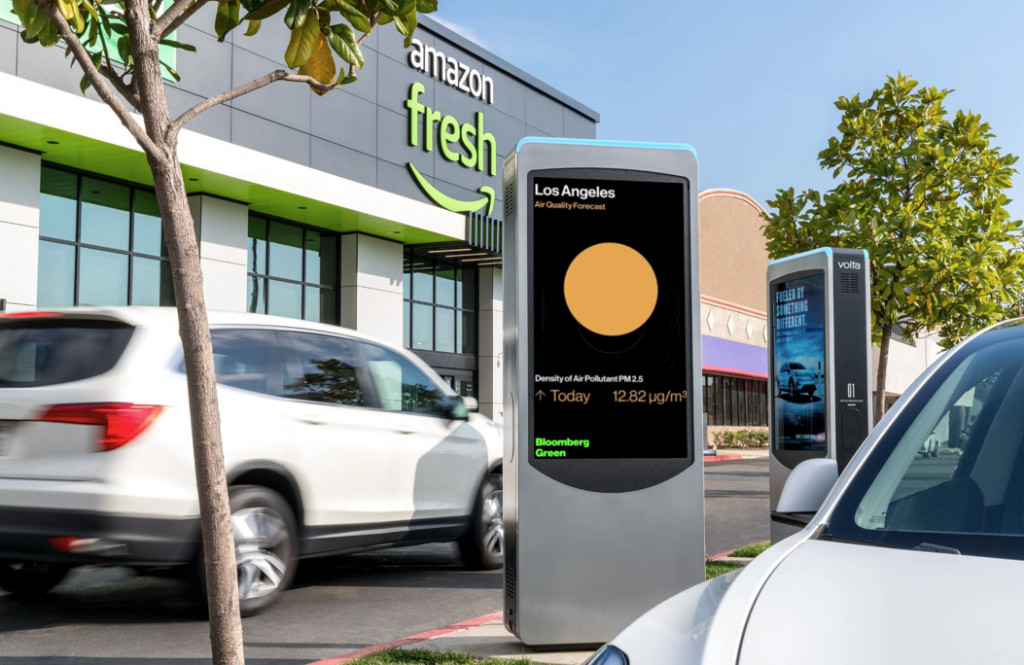Anywhere you are in the U.S., you’re reducing the amount of localized air pollution by driving an electric car—yes, even if your local power source is a coal plant.
Not all newbies understand that, and so a few reminders—about air quality itself—can be a useful motivator, perhaps, to spread the word.

Tesla Model S at Volta Industries charging station
Volta Charging is best known for its unique “commerce-centric” business model, which provides free charging in exchange for ads and product placements that display on a large screen while you’re charging. But as part of a PSA of sorts, Volta has teamed up with Bloomberg Media to display Bloomberg Green’s “Air Pollution Scorecard,” with localized air quality info, on those screens at times.
The information on the charging screens draws from 4,000 sensors monitoring PM2.5, referring to particulate matter smaller than 2.5 millionths of a meter. PM2.5, detailed in greater depth at this page from Bloomberg Energy, is made up of soot from vehicles, wildfires, or cookstove pollution, plus sulfate aerosols from power generation and desert dust. Green Car Reports has also reported that it also includes tire dust and even certain types of trees.

Volta Charging - Air quality information
Awareness of PM2.5 directly relates to the health of your family and community. The greater concerns for this specifically are that it leads to various types of cardiovascular and respiratory illness—including higher Covid-19 death rates—and no amount is considered a safe amount.
Bloomberg Energy itself sources a non-profit effort, OpenAQ, for this data. Without a subscription to Bloomberg or a visit to Volta chargers, you can access the global network of air quality sensors here. But it’s great to see that a charging network is bringing attention to it.













